I never thought I'd find a goat recipe that would make my kids ask for seconds, but these rosemary-crusted goat chops proved me wrong.
As someone who grew up eating my Lola's kaldereta, I was skeptical about trying a new way to cook kambing. But this recipe combines the best of both worlds: my grandmother's tricks for removing the gamey taste with a simple yet fancy cooking method that gives you perfectly juicy meat every time. The best part? It's cheaper than lamb chops but tastes just as fancy.
I've been cooking this recipe for my family for years now. The meat gets this beautiful golden crust on the outside while staying tender inside. If you've been hesitant about cooking goat meat at home, this recipe will change your mind. It's simple enough for everyday cooking but special enough for when you have guests over. Plus, you still get to enjoy it the Filipino way - eating those flavorful bits close to the bone!
Jump to:
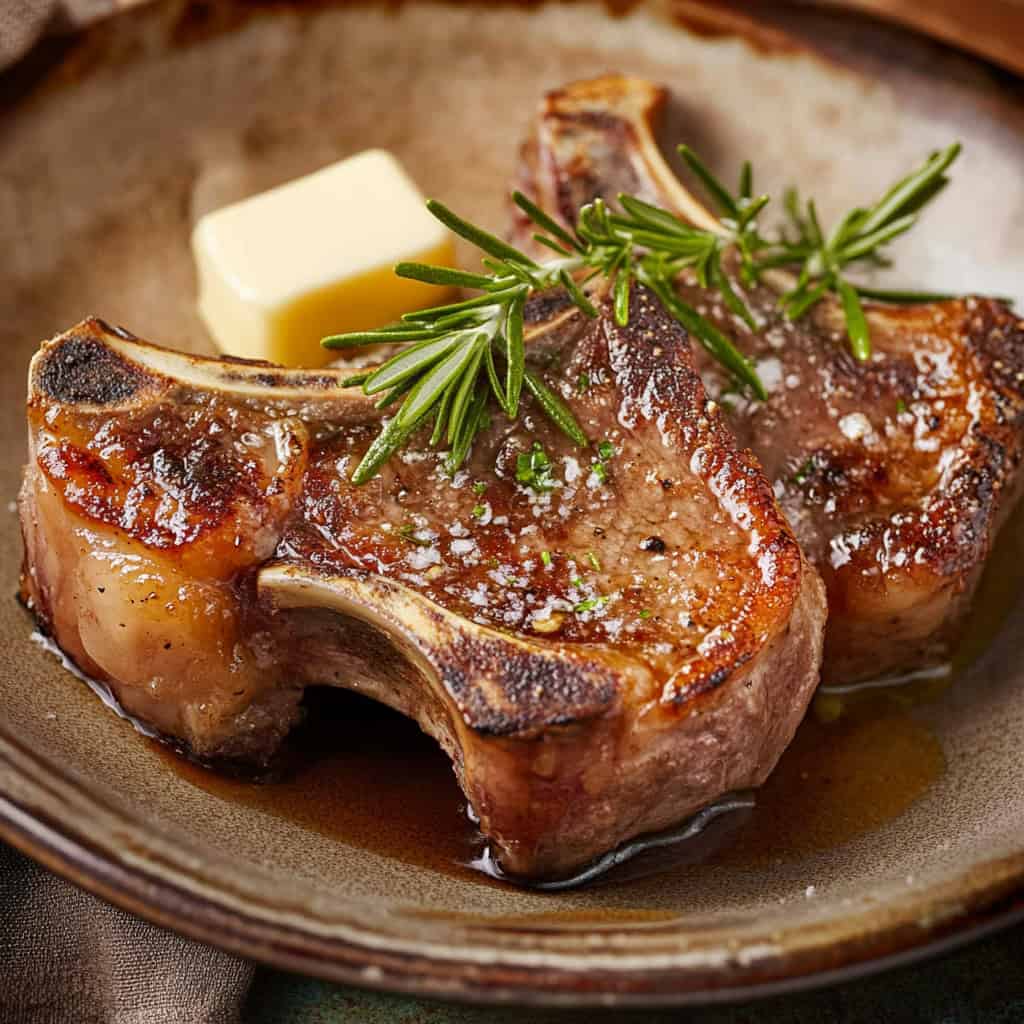
Why You'll Love This Recipe
- Perfect golden-brown crust with a tender, juicy interior
- Simple yet sophisticated flavor profile
- Restaurant-quality results at home
- No gamey taste when properly prepared
- Adaptable to various cooking methods
- Budget-friendly alternative to lamb
- Celebrates traditional Filipino meat preparation techniques
Ingredients
This recipe uses a carefully balanced blend of ingredients to transform goat meat into a restaurant-quality dish. The kosher salt and resting time tenderize the meat while reducing gaminess.
Rosemary provides an aromatic flavor that complements goat's natural taste, while garlic and butter create a rich, flavorful basting liquid. The lemon's acidity brightens the dish, and finishing with flaky sea salt enhances the crust's texture for a perfect bite every time.

- 4 goat chops (around 12 oz / 340g)
- 2 teaspoons kosher salt
- 1 teaspoon freshly ground black pepper
- 1 teaspoon finely chopped fresh rosemary
- 2 teaspoons light olive oil
- 2 tablespoons unsalted butter
- 1 small sprig rosemary
- 2 cloves garlic (crushed)
- Flaky sea salt
- Lemon wedges
- 2 teaspoons sliced chives (optional)
Equipment
- Cast Iron Skillet - Essential for achieving the perfect sear and heat retention throughout cooking
- Digital Meat Thermometer - For precise cooking temperature monitoring to avoid overcooking
- Sharp Chef's Knife - For scoring fat and portioning meat accurately
- Kitchen Tongs - For safely flipping and handling the hot meat
- Paper Towels - For patting meat dry to ensure proper crust formation
- Small Plate or Baking Sheet - For marinating and resting the meat
- Spoon - For basting the chops with butter and aromatics
- Cutting Board - For safe preparation and resting surface
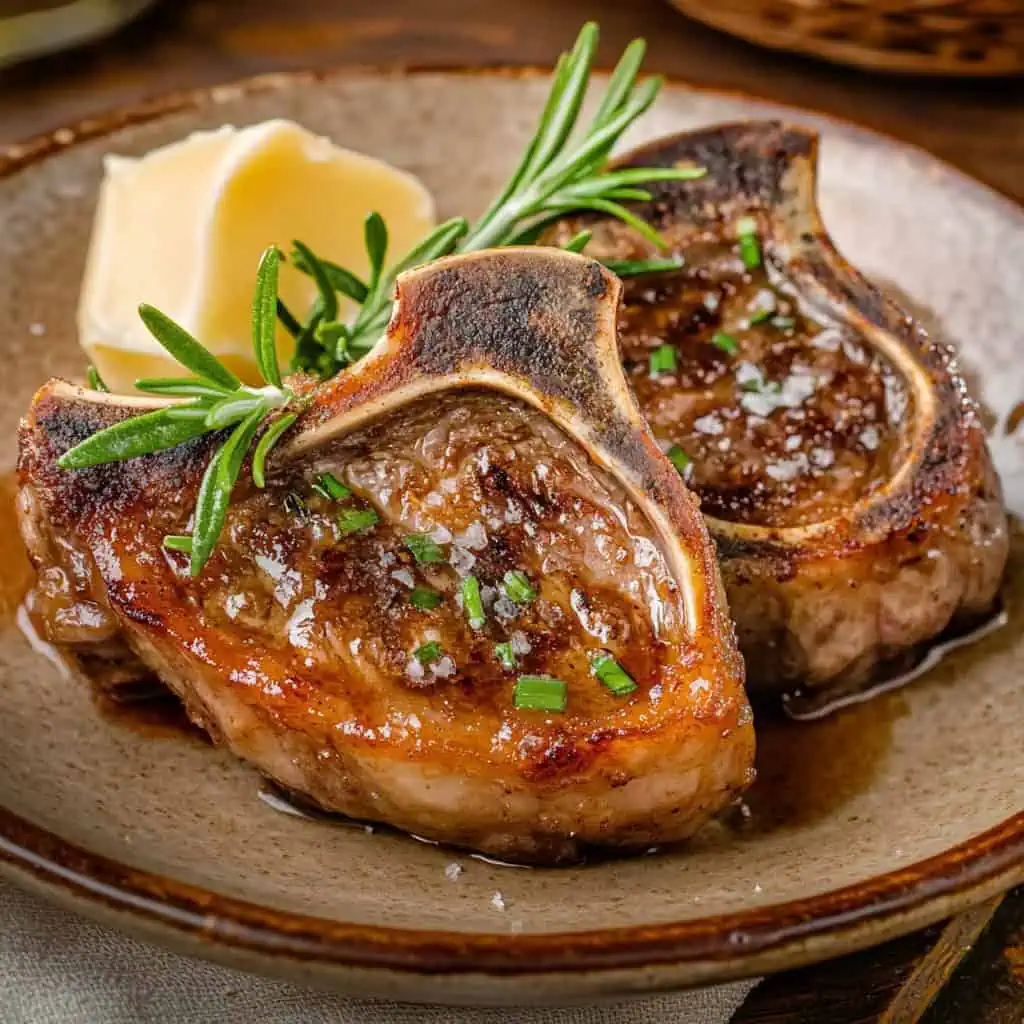
How To Make
- Take the goat chops and use your knife to score the fat cap in a crosshatch pattern, making shallow cuts across the surface. This helps the fat render better during cooking.
- Season all sides of the chops generously with kosher salt and black pepper, then sprinkle with the finely chopped rosemary, pressing it gently into the meat. Place the seasoned chops on a plate or baking sheet and put them in the refrigerator, uncovered, for at least 2 hours or up to 24 hours. This dry brining step is crucial for flavor and texture.
- When you're ready to cook, take the chops out of the refrigerator and let them sit at room temperature for 30 minutes. This ensures even cooking.
- While waiting, gather your cast iron skillet and other ingredients. Pat the chops dry with paper towels if you see any moisture on the surface.
- Place your cold cast iron skillet on the stove and add the olive oil. Place the goat chops fat-side down in the cold pan, then turn the heat to medium. This slow start helps render the fat better.
- Cook the chops on the fat side for 2-3 minutes until golden brown. You'll see the fat starting to melt and turn crispy.
- Turn the heat up to high, then flip the chops onto one of their flat sides. Cook for 2 minutes.
- Flip the chops to the other flat side and cook for another 2 minutes. If you're using a meat thermometer, start checking the temperature now.
- Add the butter, crushed garlic cloves, and a sprig of rosemary to the pan. As the butter melts, tilt the pan slightly and use a spoon to baste the chops with the hot butter for about 30 seconds.
- Check the internal temperature with your meat thermometer if using one. For medium-rare, look for 130°F (54°C). For medium, aim for 135°F (57°C).
- Transfer the chops to a plate lined with paper towels and let them rest in a warm spot for 4-5 minutes. The temperature will rise another 5 degrees while resting.
- Sprinkle with a little flaky sea salt and serve with lemon wedges on the side. Don't forget to pick up the bones with your hands after cutting off the meat – that's where some of the best bites are hiding.

Tips from Lola's Kitchen
- Quality Matters: Always choose fresh, young goat meat for the most tender results. Look for meat with a bright pink color and firm texture.
- Dry Meat = Better Crust: Pat the meat completely dry before seasoning for the best crust formation. Any moisture on the surface will create steam and prevent proper browning.
- Patience Pays Off: Don't move the meat while searing - let it develop a good crust before flipping. Resist the urge to check too often.
- Bone Broth Bonus: Save the bones after enjoying your chops to make a rich and flavorful soup base. Simply simmer with onions, garlic, and herbs.
- Gamey Smell Solution: If you detect a strong gamey aroma, soak the meat in a ginger-vinegar solution (2 tablespoons vinegar, 1 tablespoon grated ginger per cup of water) for 30 minutes before cooking, then pat completely dry.
- Fat Is Flavor: Don't trim away all the fat before cooking - it adds crucial flavor and moisture to the meat during the cooking process.
- Room Temperature Rule: Always let meat rest at room temperature before cooking. Cold meat hitting a hot pan will contract quickly and become tough.
Substitutions
- Rosemary: Fresh thyme, oregano, or a Mediterranean herb blend can replace rosemary
- Olive Oil: Canola oil, avocado oil, or any high-heat cooking oil will work
- Kosher Salt: Sea salt or regular table salt (reduce amount by ¼ teaspoon if using table salt)
- Fresh Garlic: ¼ teaspoon garlic powder per clove as a substitute
- Butter: Ghee or olive oil can replace butter for dairy-free option
- Goat Chops: Lamb chops work perfectly with the same cooking method
- Lemon: Calamansi or lime wedges offer a similar brightness
Troubleshooting
Problem: Tough Meat
- Solution: Watch cooking temperature carefully and ensure proper resting time. Goat meat becomes tough when overcooked, so aim for medium-rare to medium.
Problem: No Crust Forming
- Solution: Make sure meat is completely dry before cooking and your pan is properly preheated. Also check that your heat isn't too low.
Problem: Too Gamey
- Solution: Pre-soak in a mixture of milk or vinegar solution for 30-60 minutes before cooking. Rinse well and pat completely dry.
Problem: Burning Too Quickly
- Solution: Lower heat and adjust cooking time. Your pan might be too hot or the fat content in your chops might be higher than usual.
Problem: Uneven Cooking
- Solution: Ensure meat is at room temperature before cooking and that chops are of even thickness. Consider using a meat mallet to even out thicker sections.
Storage & Reheating
Storage:
- Refrigerator: Store in an airtight container for 3-4 days
- Freezer: Wrap tightly in freezer paper, then plastic wrap, and store for up to 3 months
Reheating:
- Oven Method (Recommended): Preheat oven to 300°F (150°C). Place chops on a wire rack over a baking sheet, cover loosely with foil, and heat for 10-15 minutes until just warmed through.
- Pan Method: Heat a skillet over low heat, add a tablespoon of water or broth, place chops in the pan, cover with a lid, and warm gently for 3-4 minutes per side.
- Avoid Microwave: This will toughen the meat and destroy the texture you worked so hard to achieve.
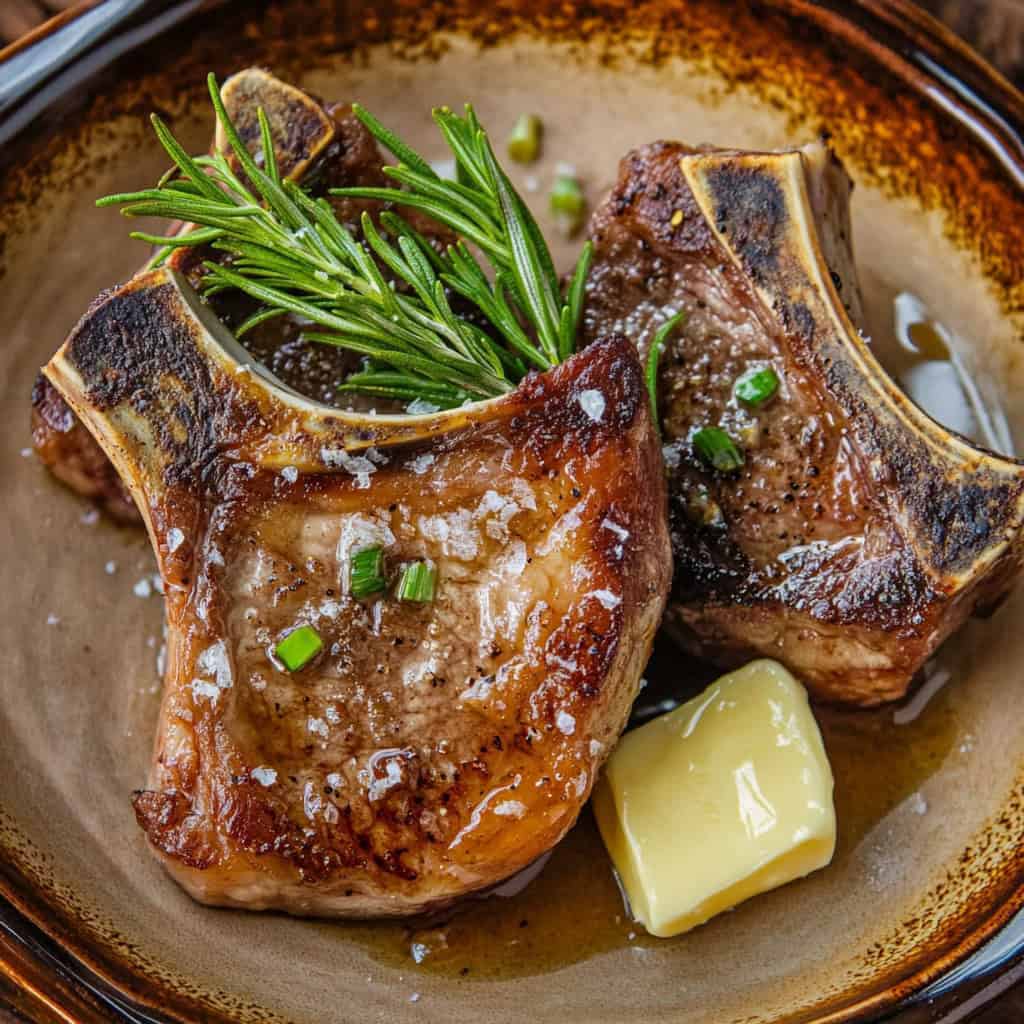
FAQ
Why is my goat meat tough?
Goat meat needs proper temperature control and resting time. Never overcook as it becomes tough quickly. Always use a meat thermometer and remove from heat 5°F before your target temperature.
Can I use frozen goat chops?
Yes, but thaw completely in the refrigerator (never at room temperature) and ensure meat reaches room temperature before cooking. Pat very dry after thawing as frozen meat releases more moisture.
How do I reduce gamey flavor?
Proper dry brining and marinating in acid (vinegar/calamansi) helps reduce gamey taste. Also, choosing younger goat meat and removing excess fat can help minimize gamey flavors.
Can I grill these chops?
Yes, they're excellent grilled! Prepare as directed, then grill on high heat 3-4 minutes per side over direct heat, then move to indirect heat until desired internal temperature is reached. Watch for flare-ups from dripping fat.
How do I know when the meat is done without a thermometer?
Use the finger test - press the meat with your finger. For medium-rare, it should feel like pressing the base of your thumb when touching your thumb and index finger together. For medium, it should feel like when you touch your thumb and middle finger.
Can I make this recipe ahead for a dinner party?
You can season and dry brine the chops up to 24 hours ahead, but the cooking should be done just before serving for best results. If necessary, you can cook them 80% through, then finish them with a quick sear and butter baste just before serving.
What sides pair well with goat chops?
Rice, roasted vegetables, grilled eggplant, and crusty bread all pair beautifully. A fresh salad with an acidic dressing helps balance the richness of the meat.
Is goat meat healthy?
Yes! Goat meat is leaner than beef and pork with higher protein and lower cholesterol. It's also higher in iron and more environmentally sustainable to raise than larger livestock.
Related
Looking for other recipes like this? Try these:

Rosemary-Crusted Goat Chops (Inihaw na Karne ng Kambing)
Equipment
- Cast Iron Skillet (Kawaling bakal) Essential for achieving the perfect sear
- Digital Meat Thermometer For precise cooking temperature
- Sharp knife [Matalas na kutsilyo] For scoring fat and portioning
- Kitchen tongs (Sipit) For safe meat handling
- Paper towels For patting meat dry
- Small Plate or Baking Sheet For marinating
- Spoon (Kutsara) For basting
Ingredients
For the Chops:
- 4 goat chops around 12 oz / 340g (Karne ng kambing)
- 2 teaspoons kosher salt Asin
- 1 teaspoon freshly ground black pepper Dinurog na paminta
- 1 teaspoon finely chopped fresh rosemary Dinurog na rosemary
- 2 teaspoons light olive oil
For Finishing:
- 2 tablespoons unsalted butter Mantikilya
- 1 small sprig rosemary Rosemary
- 2 cloves garlic Bawang (crushed)
- Flaky sea salt Asin
- Lemon wedges
- 2 teaspoons sliced chives optional (Hiwa ng chives)
Instructions
- Take the goat chops and use your knife to score the fat cap in a crosshatch pattern, making shallow cuts across the surface. This helps the fat render better during cooking.
- Season all sides of the chops generously with kosher salt and black pepper, then sprinkle with the finely chopped rosemary, pressing it gently into the meat. Place the seasoned chops on a plate or baking sheet and put them in the refrigerator, uncovered, for at least 2 hours or up to 24 hours. This dry brining step is crucial for flavor and texture.
- When you're ready to cook, take the chops out of the refrigerator and let them sit at room temperature for 30 minutes. This ensures even cooking.
- While waiting, gather your cast iron skillet and other ingredients. Pat the chops dry with paper towels if you see any moisture on the surface.
- Place your cold cast iron skillet on the stove and add the olive oil. Place the goat chops fat-side down in the cold pan, then turn the heat to medium. This slow start helps render the fat better.
- Cook the chops on the fat side for 2-3 minutes until golden brown. You'll see the fat starting to melt and turn crispy.
- Turn the heat up to high, then flip the chops onto one of their flat sides. Cook for 2 minutes.
- Flip the chops to the other flat side and cook for another 2 minutes. If you're using a meat thermometer, start checking the temperature now.
- Add the butter, crushed garlic cloves, and a sprig of rosemary to the pan. As the butter melts, tilt the pan slightly and use a spoon to baste the chops with the hot butter for about 30 seconds.
- Check the internal temperature with your meat thermometer if using one. For medium-rare, look for 130°F (54°C). For medium, aim for 135°F (57°C).
- Transfer the chops to a plate lined with paper towels and let them rest in a warm spot for 4-5 minutes. The temperature will rise another 5 degrees while resting.
- Sprinkle with a little flaky sea salt and serve with lemon wedges on the side. Don't forget to pick up the bones with your hands after cutting off the meat – that's where some of the best bites are hiding.
- If you want to save the chops for later, let them cool completely, then store in an airtight container in the refrigerator for up to 3 to 4 days. Reheat them gently in a low-temperature oven (300°F/150°C) for about 10 minutes to avoid toughening the meat.
Tips from Lola's Kitchen
- Always choose fresh, young goat meat for the most tender results
- Pat the meat completely dry before seasoning for the best crust
- Don't move the meat while searing - let it develop a good crust
- Save the bones for making soup
- If you smell gaminess, soak the meat in ginger-vinegar solution for 30 minutes before cooking
Nutrition
The Story Behind Rosemary-Crusted Goat Chops
While goat meat might not be the first choice for many home cooks, this rosemary-crusted goat chop recipe brings together centuries of Filipino cooking wisdom with modern culinary techniques. In the Philippines, goat meat (or karne ng kambing) has long been a celebrated protein, featuring in beloved dishes like kaldereta, kilawin, and papaitan. But this particular preparation method takes our traditional ingredient in an exciting new direction.
The inspiration for this dish comes from the sustainable farming practices of Filipino rural communities, where goats have been raised for generations as an economical and sustainable meat source. These small ruminants are particularly well-suited to the Philippine climate and have provided Filipino families with nutritious, lean protein for centuries. Today, with the growing interest in sustainable eating and nose-to-tail cooking, goat meat is experiencing a well-deserved renaissance in modern kitchens.
What makes this recipe special is how it transforms what many consider a "gamey" meat into a sophisticated dish that rivals expensive lamb chops. The secret lies in the dry brining process - a technique that Filipino grandmothers have long used in their own way, often combined with vinegar or calamansi to tenderize meat. This modern adaptation uses kosemary and sea salt to achieve the same goal while adding layers of flavor that complement the meat's natural taste.
The cooking method itself draws inspiration from both Filipino ihaw (grilling) traditions and French culinary techniques. The high-heat searing creates a golden crust that seals in the juices, while the addition of aromatic rosemary pays homage to Mediterranean flavors that pair surprisingly well with our local ingredients. It's a perfect example of how Filipino cuisine continues to evolve while staying true to its roots.
For home cooks looking to expand their repertoire beyond the usual pork and chicken dishes, this recipe offers an accessible entry point into cooking with goat meat. It's particularly popular during special occasions and weekend family gatherings, where the slightly longer preparation time can be part of the celebration itself. The dish has found a special place in modern Filipino-fusion cuisine, often served in upscale restaurants alongside traditional sides like pickled papaya (achara) or grilled eggplant salad (ensaladang talong).
Whether you're a seasoned cook familiar with kambing or trying goat meat for the first time, this recipe bridges the gap between traditional Filipino flavors and contemporary cooking methods. It's a testament to how our cuisine continues to evolve while honoring its roots, creating dishes that are both innovative and deeply connected to our culinary heritage.
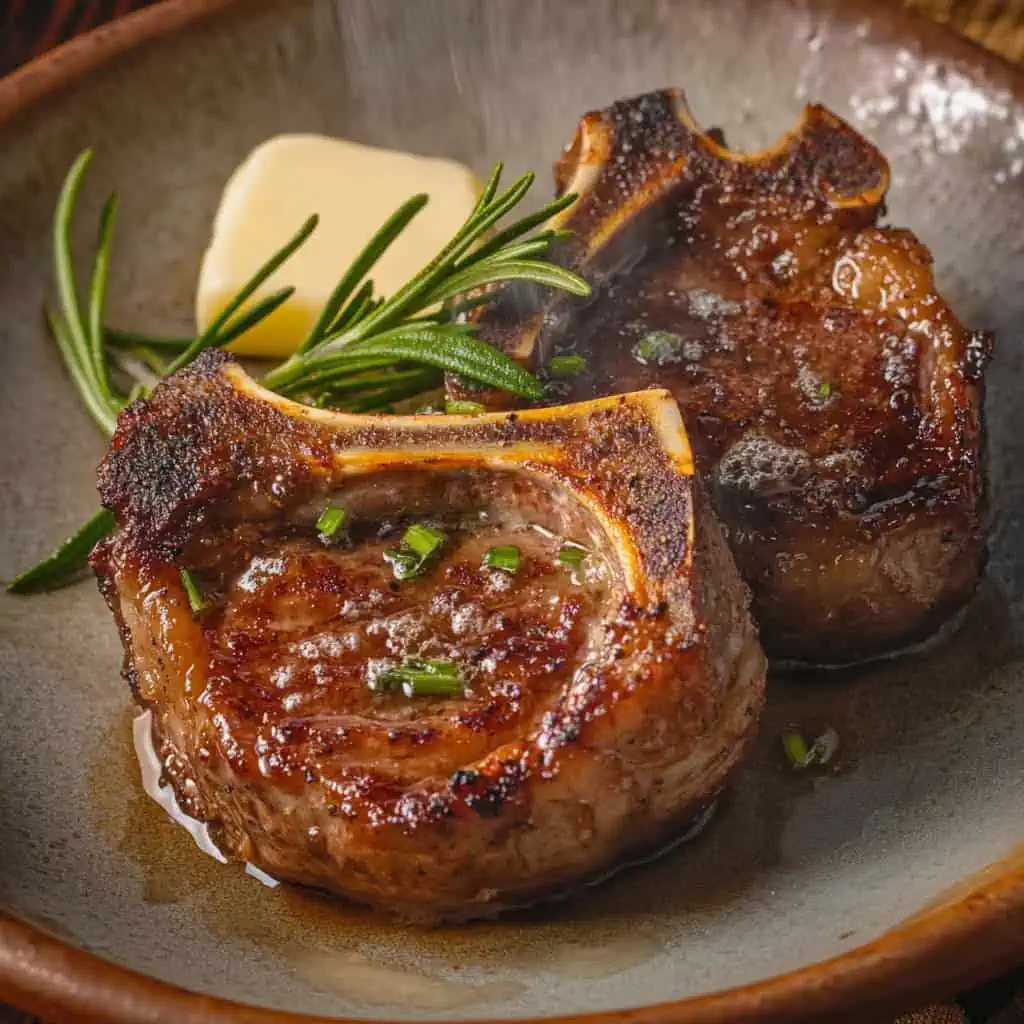








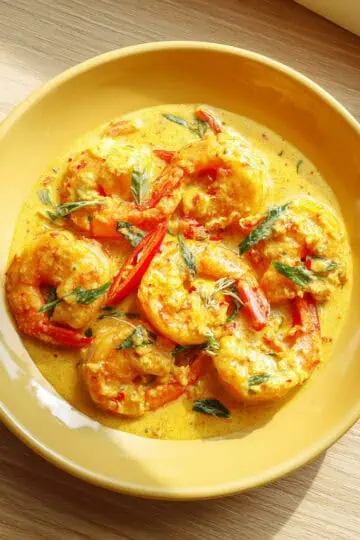
Comments
No Comments